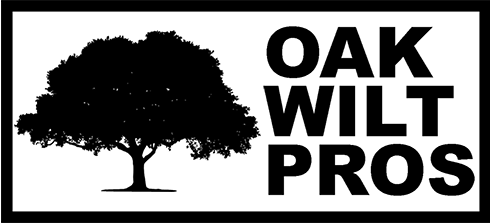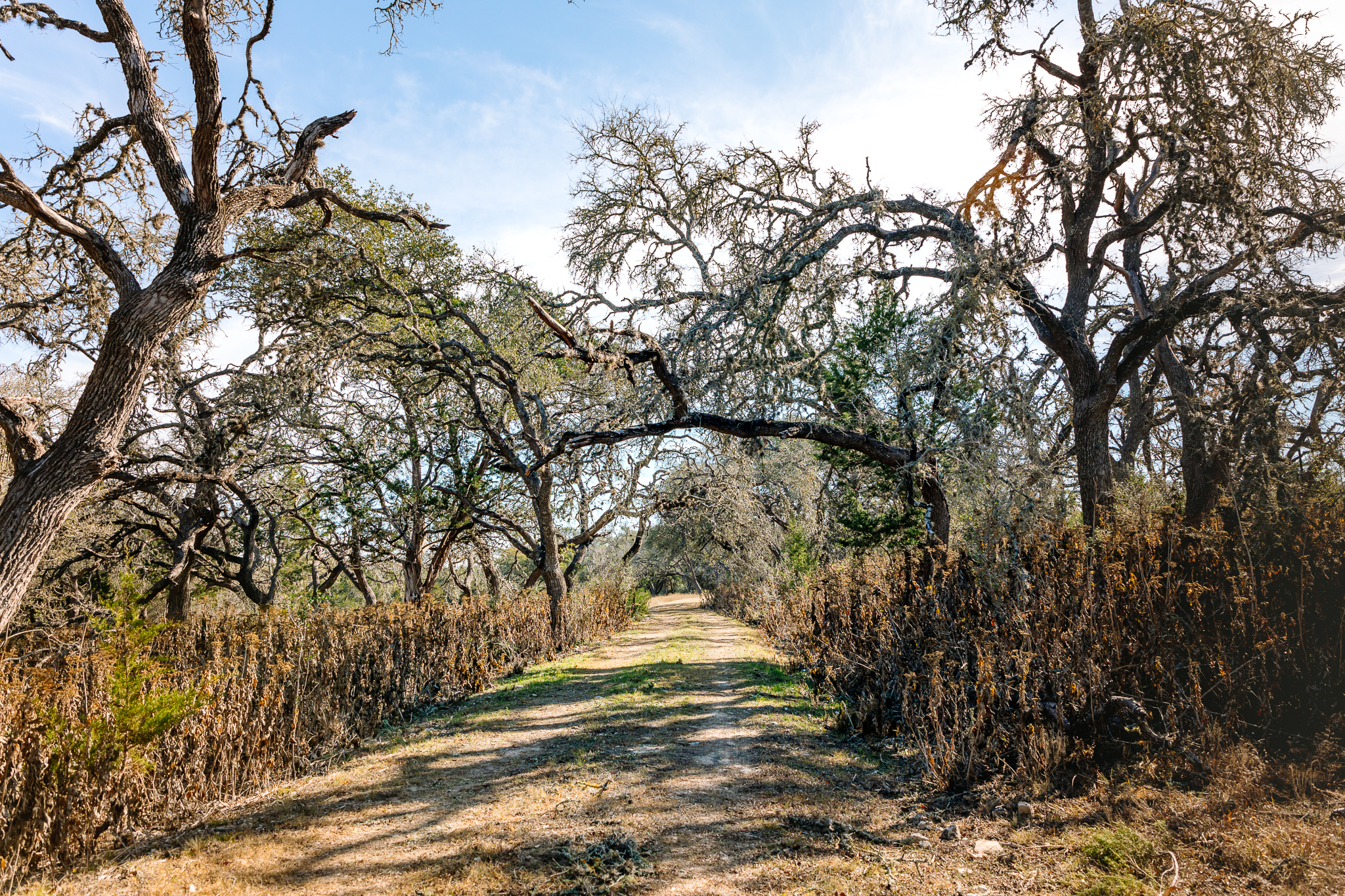Can your prized oak trees withstand a silent killer?
It begins subtly, with just a few wilted leaves among robust branches.
But oak wilt is a formidable adversary, often advancing stealthily beneath the bark, compromising vital water-transporting vessels—essentially sealing the fate of oaks before symptoms surface in their majestic canopies.
Prevention is paramount.
Understanding Oak Wilt Disease
Oak wilt is a vascular fungal infection targeting various oak species.
Spread primarily by beetles or through interconnected root systems, this pathogen disrupts the water-conducting xylem tissues. Once established, it triggers blockages that impede sap flow, often culminating in tree mortality.
Management of oak wilt requires timely identification and strategic intervention to mitigate spread and impact.
Identifying Symptoms
Early detection is critical—wilting, discoloration, and defoliation indicate oak wilt presence and imminent threat to tree health.
Oak wilt can kill a tree within a single season, emphasizing the urgency of detecting and addressing symptoms swiftly.
If you notice leaf discoloration progressing from the edges inward, wilted leaves, or premature leaf drop, these may be harbingers of oak wilt infection.
Systematic vigilance is key when monitoring for symptoms—patterns such as a reduction in leaf size, altered leaf coloration, and increased leaf drop should prompt immediate expert consultation.
Spread Through Root Systems
Oak wilt infiltrates forests via interconnected root systems, posing risks to nearby oaks through subterranean networks.
Intertwined roots facilitate the transmission of the pathogen, establishing an underground conduit for oak wilt’s relentless advance.
Barrier creation to interrupt root grafts may be necessitated for containment; injection of fungicides minimizes losses.
Mitigation strategies involving mechanical trenching can disrupt root connections, deterring the pathogen’s subterranean journey between trees.
Timely interventions can curtail the pathogen, safeguarding the arboreal kin of affected oaks from imminent peril.
Fungicide Injection Strategies
Fungicide injections are a critical countermeasure in our arsenal against the insidious oak wilt pathogen, ensuring a decisive dose of prevention or therapy. These interventions, quintessential for the arboreal defense, employ macro-injection techniques to maximize the distribution of Alamo fungicide throughout the oak’s vascular system. Placement and frequency of injections are meticulously calculated based on the tree’s DBH, implicating the science of dendrology in every precise action.
A stringent protocol dictates the treatment schema, with pre-emptive injections proving to be most efficacious, lending an upper hand in the arboricultural battle against infection. Our vigilant approach necessitates treatment of oaks within a 100-foot radius of an infected tree, effectively establishing protection in trees susceptible to root travel.
Systemic Macro-Injection Basics
Systemic macro-injections are the cornerstone of professional oak wilt treatment strategies. This method involves directly injecting a therapeutic fungicide into the vascular system of the tree.
The process begins by meticulously exposing the root flare of the tree, creating access points for treatment. An arborist trained in plant healthcare will then drill holes at strategic locations around the root flare and insert specialized injection tees. These serve as the conduits for the fungicide, ensuring even distribution throughout the tree’s vascular system. The precision of this technique is critical, as it affects the fungicide’s efficacy and the tree’s stress levels.
Low-pressure injection systems are then used to deliver the fungicide, Alamo, into the tree. Each tree’s dosage is calibrated according to its DBH (diameter at breast height), a standard measurement in arboriculture that ensures accuracy in treatment. The meticulous dosage calculation is crucial for effective disease mitigation and overall tree health preservation.
Finally, timing is a critical component of systemic macro-injection treatments. Preventative applications are recommended before the tree’s health is compromised. Immediate intervention in close proximity to infected trees within approximately 100 feet can significantly increase the odds of successful treatment. However, the results are variably dependent on the tree’s condition at the time of treatment and the progression of the disease.
Alamo: The Industry Standard
Alamo fungicide is pivotal in combating the spread of oak wilt with proven effectiveness.
- Preventative Treatment: Ideally administered before infection, it can achieve success rates of up to 85%-90%.
- Dosage Calculation: Dependent on the tree’s DBH, ensuring precise and effective application.
- Macro-Injection Method: Employed for optimal distribution of Alamo throughout the tree’s vascular system.
Efficacy of Alamo is largely contingent on the health of the tree at the time of application.
Careful timing and application can curtail oak wilt advancement, preserving the health of valuable oak trees.
Timing for Treatment Success
The pivotal phase for applying oak wilt treatment is preemptive; that is, before the tree shows signs of distress from the disease. Punctual application, particularly as oak wilt encroaches within a 100-foot radius, exponentially bolsters the likelihood of a tree’s survival. Assuring maximum effectiveness requires adherence to seasonal treatment guidelines, targeting periods when trees are most receptive to uptake. Procedures carried out during this favorable timeframe lay the foundation for a robust defensive barrier against the relentless progression of oak wilt, significantly safeguarding the arboreal specimen’s vitality.
Importance of Preventative Measures
Preventative care is fundamental to combat oak wilt, as once infection occurs, management becomes more challenging and often less successful. A preemptive strategy, deploying systemic fungicide injections before any sign of disease, delivers the most promising prospects for oak preservation.
Early interventions are critical, arresting the disease before it gains a foothold. This proactive stance capitalizes on the tree’s natural defenses, augmenting them with chemical protectants that forestall infection.
Indeed, prevention is less resource-intensive than treatment post-infection. Systemic applications before disease presentation demonstrate higher efficacy and offer a cost-effective approach to tree healthcare.
Preventative treatments impart resilience to trees against oak wilt, especially those in proximity to infected areas. Such vigilance can mitigate the spread and impact of the pathogen, safeguarding other susceptible oaks in the vicinity from the devastating effects of the disease.
A well-timed preventative application not only saves the tree but also maintains the ecological balance. Oak trees are keystone species, thus their health has ramifications beyond their individual survival.
Consequently, the strategy of choice for managing oak wilt should pivot towards prevention. Embracing this approach can preserve the grandeur and longevity of these magnificent trees, sustaining them for future generations to appreciate.
Therapeutic Applications Guidelines
When oak wilt is detected, time is of the essence for implementing treatment protocols designed to arrest the spread of infection. Therapeutic intervention must be swift to halt the pathogen’s progress and to stabilize the affected tree’s condition. Coupled with an accurate diagnosis, therapeutic treatment can be pivotal in the retention of treespace diversity.
Provided the tree is a viable candidate, therapeutic fungicide injections are administered strategically to maximize benefit. These treatments, while beneficial, do not guarantee full recovery, but they are essential in managing the disease’s progression. The success of these applications relies heavily on the tree’s overall health and the extent of oak wilt manifestation.
Macro-injection techniques provide an effective conduit for delivering fungicides, such as Alamo, into the vascular system of the tree. The method involves carefully exposing root flares and applying the fungicide through drill-inserted injection tees, ensuring comprehensive distribution of the therapeutic agent. This process requires meticulous execution by trained professionals to achieve optimal results.
The dosing of fungicide is determined by the diameter at breast height (DBH) of the tree. This precise measurement ensures the tree receives an adequate amount of the therapeutic agent to combat the pathogen. It is important to recognize that the therapeutic results vary and early detection remains critical for any semblance of a favorable outcome.
A proactive stance in the management of oak wilt includes the treatment of surrounding trees as preventive measures. Trees within an approximate 100-foot radius of the infection site necessitate careful examination for potential treatment to forestall the disease’s migration via root systems. Implementing therapeutic treatments can thus form part of a comprehensive oak wilt management strategy.
Treatment Scope and Assessment
In the battle against oak wilt, thorough treatment scope and meticulous assessment are paramount. Identifying trees within the critical infection proximity—typically near or within a 100-foot radius of known disease presence—necessitates a detailed health evaluation. This involves a careful examination of the tree’s current condition, as well as its susceptibility to oak wilt, with specific attention to its DBH measurement and overall vitality. Understanding the local ecology and potential disease pathways is equally vital, enabling the tailored administration of fungicide treatments designed to interrupt this devastating pathogen. Only through such comprehensive and keen assessment can one ensure the preemptive or responsive treatments administered stand the best chance of efficacy, safeguarding the arboreal beauties that grace our landscapes.
Evaluating Tree Health
Assessing the vitality of your oak tree is critical for effective management of oak wilt.
- Visual Inspection: Check for unusual leaf discoloration, defoliation, or wilt.
- Branch Examination: Search for dieback or deformities, especially if it appears first in the upper canopy.
- Leaf Analysis: Examine leaves for spotting or unusual patterns.
Early detection of symptoms can lead to more successful treatment outcomes.
Implementing a preventive strategy based on health assessment reduces the risk of oak wilt spread.
Determining Trees at Risk
Identifying which oaks are most susceptible to oak wilt is crucial for effective prevention.
- Proximity to Infected Trees: Trees within approximately 100 feet of a confirmed oak wilt case are at immediate risk.
- Species Susceptibility: Certain oak species are more vulnerable, with red oaks and live oaks generally at higher risk than most white oaks.
- Tree Vigor: Examine the overall health of oaks; note and monitor any patterns of decline.
- Wound Exposure: Recently wounded oaks, especially during high-risk periods, are more susceptible to infection.
The proximity and health of an oak dictate its risk level for oak wilt infection.
Effective management requires rapid identification and treatment of at-risk trees.

